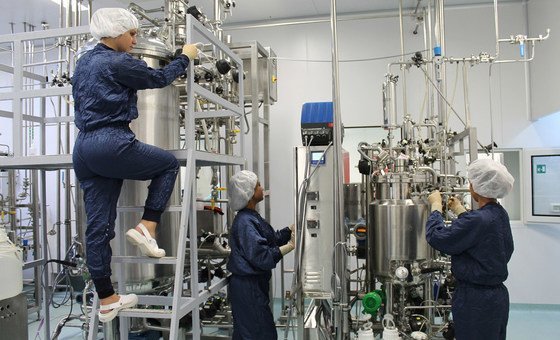More than 100 countries—including China, India, Brazil and South Africa—face serious obstacles that could hamper their efforts to become high-income countries in the coming decades, warns a new study by the world Bank.
According to the financial institution, as countries become richer they often fall into a “trap” when their annual gross domestic product (GDP) per capita reaches approximately 10% of that of the United States, currently equivalent to $8,000, a figure classified as “middle income.”
The World Bank highlighted that Only 34 middle-income economies have managed to move into the high-income category from 1990 to dateand more than a third of them benefited from joining the European Union or from oil discoveries.
The report details that 108 countries were classified as middle income by the end of 2023, each with a GDP per capita ranging from $1,136 to $13,845. These countries are home to 6 billion people, 75% of the world’s population, and two out of three people living in extreme poverty. These nations They generate more than 40% of the world’s GDP and more than 60% of carbon emissions.
Protectionism, population ageing and slow energy transition
In addition, these countries face much greater challenges than its predecessors to move from middle income given the protectionist wave in advanced economies, the rapid ageing of their populations and the slowness of their energy transition.
The World Bank’s chief economist said the battle for global economic prosperity “will largely be won or lost in middle-income countries,” but added that many of them “are resorting to outdated strategies to become advanced economies.”
Indermit Gill explained that those nations They rely solely on investment for too long or they are prematurely oriented towards innovation.
New focus
He argued that such countries need a new approach that focuses on investment and incorporates new technologies from abroad under a strategy that balances investment, incorporation and innovation.
“With the growing demographic, ecological and geopolitical pressures, there is no room for error”.
According to the study, depending on the stage of development they are at, all countries should adopt a gradual and progressively more sophisticated combination of policies.
Thus, the Low-income countries can focus solely on policies aimed at increasing investmentBut once they reach lower-middle-income status, they must change course and expand the policy mix with investment and uptake, which involves adopting technologies from abroad and promoting their use throughout the economy.
Once having reached the upper middle income level, they must move on to a phase of investment, incorporation and innovation.
The World Bank considers It is possible to implement this approach even in the current difficult contextHowever, he added that countries that try to spare citizens the inconvenience associated with reforms and opening up will miss out on the benefits of sustained growth.
South Korea, Poland and Chile
The study cites South Korea as example of the progress that can be achievedThe Asian country started with a combination of simple policies to increase public investment and encourage private investment. During the 1970s, that strategy was transformed into an industrial policy that encouraged domestic companies to adopt foreign technology and more sophisticated production methods. Companies responded to the plan and the government did its part, the publication noted.
He also notes that Poland and Chile followed a similar path. Poland focused on increasing productivity with technologies extracted from Western Europe, and Chile encouraged the incorporation of technology from other countries and used it to drive domestic innovation.





![[Img #74664]](https://thelatestnews.world/wp-content/uploads/2024/12/James-Watson-The-controversial-genius-behind-the-double-helix-150x150.jpg)









Add Comment